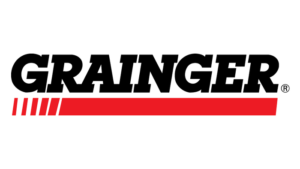Early Q2 Market Insights from Rexel and Grainger

Some early Q2 insights from Rexel and Grainger provide some insights into the current electrical and MRO distribution market and, as such, provide a “base case” for distributor performance given that Grainger is considered a “bellweather” for the MRO market and Rexel, given historical performance is a low to mid-range performer in the US market.

Rexel
From their recent announcement where they updated their 2021 outlook:
- Globally, “better -than-expected” business activity during the first half with sequential improvement in Q2. (which is to be expected due to COVID reopenings in most countries as well as benefiting from price increases.)
- When releases first half results, expects to show same-day sales growth around 19% globally and global EBITDA of 5.6%.
- Receiving a high NPS (Net Promoter Score) from customers (CMG clients utilize a proprietary customer satisfaction process that generates a CSI, customer satisfaction index, that measures customer input in 15 core areas. The CSI can be calculated by geographic region to identify issues. Contact us to learn more.)
- US activity is now “back to 2019 levels” and are implying activity between 5-8% above 2019 with second half of the year benefiting from the US recovery and from recovery in Europe.
- Expects continued “volatility” globally due to “sanitary crises” (new term for COVID?) and “global supply” affecting bottlenecks. (Given the supply chain disruptions many have seen, if Europe recovers significantly, how much will this contribute to the supply chain issues as there is increased competition for material / resources? Perhaps something to ask manufacturers – what percent of their material is coming in from overseas and what their US inventory is? Will they even say?)
- Seeing growth in contractor and industrial markets.
- For the most part able to push through price increases.
- Globally, same-day sales growth is between 12-15% (Note, DISC is placing US overall growth in the 15-16% as of last month. Contact Chris Sokoll and he can discuss their recent DISC Flash Report.)
These projections are for Rexel globally, so US performance may, and probably will, differ and given Rexel US’s historical regional variations in performance, the range within the US could be significant.
From a global comparison viewpoint, this could set a “floor” for expectations from WESCO given that WESCO has a much larger footprint than historically due to the Anixter acquisition. Only 35% of Rexel’s business is in North America.

Grainger
According to a recent analyst report from William Blair, based upon recent insights of / from the company:
- “Pushing higher product and freight costs
through to large contract customers (about 70% of Grainger’s High-Touch segment
sales) is not a slam dunk” and this could affect their overall margins. (The
takeaway is that for large contracts / national account contracts, it can be
difficult to realize price driven revenue gains and could hurt company
profitability. This could be a concern for WESCO, who has a significant national
account business as well as their utility business. It could also be impacting
a number of industrial distributors that have national account agreements,
possibly through Supply Force.)
- Majority of contract customers receive free freight today
- Freight costs account for 6-7% of sales
- Tone of business is strong (indicating strength
in the industrial segment. The rebound in the hospitality segment (hotels bookings
are up) and many other areas that require MRO (but maybe not much electrical)
is also strong.)
- Non-pandemic product sales will be above 2019 (i.e., non-sanitary-related products used for COVID – gloves, masks, etc.)
- About 10% of sales have been to industries disrupted by the pandemic such as airlines, entertainment and hotels (so, a rebound.)
- Seeing “wallet share” gains from new customers generated during the height of COVID (highlights the benefits of data analytics to do gap analysis, model against similar customers in the category and then remarketing to those customers … in Grainger’s case, digitally and probably via telesales. Understanding customer gap analysis, at least at the product category level, should be a part of every sales management process conducted for every customer over a specific sales volume level and aggregated for every salesperson. Maintaining growth rates (or even approximating them) will require this discipline.)
- 80% of Zoro sales are from Grainger stocked items (indicating only 20% are from “marketplace-oriented” new suppliers.)
- Expects 15% sales growth annually, for the next 3-5 years, from Zoro.
- Grainger labor costs have increased. The company tracks a “labor cost / box” metric and this has been increasing as there is more competition for labor, and especially warehouse labor. Grainger is considering “satellite” warehouses to put material closer to companies (so, the RDC / CDC model reverts to the a “closer to the customer model?” If Grainger is considering investing in this type of infrastructure, whether leased or owned, it infers that it expects the labor costs and freight costs to be long-term issues.)
Additional industrial distributor insights from William Blair include:
- aerospace, auto, and oil and gas recoveries are relatively muted
- Distributors are passing through higher prices with limited pushback given shortages in many categories. Labor and product shortages are hurting business “somewhat”.
These are the insights from two leading distributors representing different segments of the market.
- Distributors – what are you seeing in your market?
- Manufacturers – what are you observing from your distributors?
- Reps – given that you see both elements of the channel, what is your feedback?























